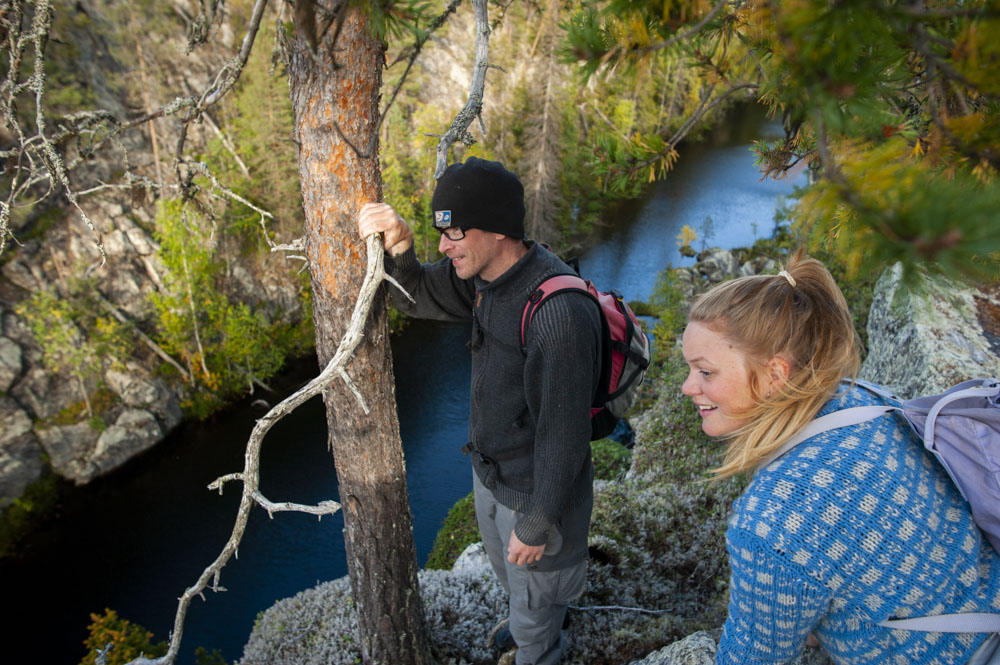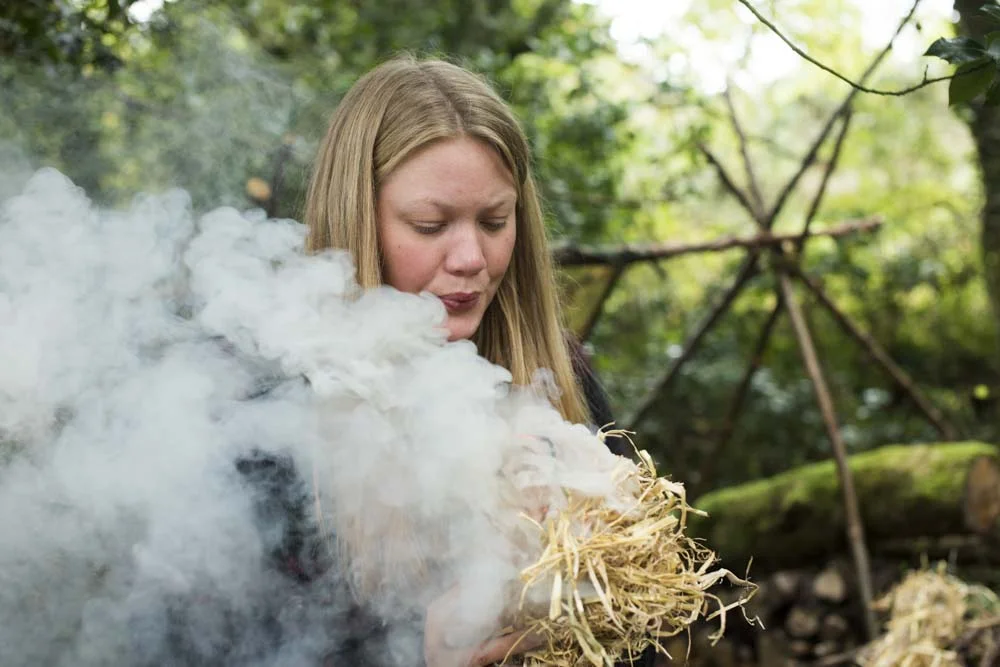How to make wilderness tea

Wilderness tea is any brew where you collect your ingredients from the forest. A cup of hot tea in the forest is tasty and cosy, but it also heats you up and hydrates in any weather. Collecting the leaves, flowers, bark and needles enhances our connection to nature, and it's a great project for a day out with the children. We found that pink heather tea is a winner with kids! In this post we'll show you how to make four different wilderness teas: Chaga, heather, spruce needle and lastly, blueberry and birch leaf tea. Happy picking & good luck!
Four different wilderness teas
Chaga tea
Chaga is found on birch trees. It resembles dark-brown charcoal and is best found in areas less suitable for birch trees, such as forest edges that are near swamps or marshes.
Chaga contains Beta-D-Glucans, helping balance the body's immune system, betulinic acid which helps lower cholesterol, and massive amounts of antioxidants from the melanin which gives it the dark colour.
How to make Chaga tea
- First grate the Chaga and dry it to make a rough powder.
- Add a heaped tea spoon of Chaga powder to one cup.
- Let steep for 7-10 minutes using a tea strainer (if you have one).
Spruce needle tea
Spruce needles can be found on spruce trees all year round and the trees are very common in all European forests. Spruce needles grow separate from each other, whereas pine needles grow in pairs.
Available all year round, great source of vitamin C.
Fun fact: Just remember: "spruce - single, pine - pair, larch - lots!" as a easy way to identify coniferous trees from their needles.
How to make Spruce needle tea
- Select the lightest green needles.
- Cut the needles from the twig.
- Steep for 5 minutes.
- Around 2 tea spoons to a cup.
Blueberry leaf and Birch leaf tea
Blueberry (bilberry) and birch leaves can be harvested from spring to autumn, and are very common in European forests. Go for fresh green leaves.
Blueberry leaves are high in antioxidants and anthocyanosides which help blood circulation, and also vitamin C. Birch leaves are also rich in vitamin C and known to help with hair loss, skin rash and arthritis. They also have antibacterial properties that help recover from infection.
How to make Blueberry leaf and Birch leaf tea
- Light green, young birch leaves and bilberry leaves steeped for 5-7 minutes.
- Add blueberries when in season for fun and taste.
- No strainer needed.
Heather tea
Heather flower can be harvested from spring to autumn and is found in peat lands, forests and other natural areas. It's best to cut off small branches full of flowers and pick the flowers later.
The heather tea has a strong cleansing effect on the body and has been used to treat bladder, kidney, and liver infections.
How to make Heather tea
- Pick the flowers from the heather twig filling 3 tea spoons per cup.
- Leave to strain for 5-7 minutes using a tea strainer (if you have one)
Make wilderness tea with the kids
Family making wilderness tea
Treasure hunt for wilderness tea ingredients
Finding ingredients for a successful cup of wilderness tea does not have to be difficult or time consuming, but if you're out with kids it can become a great little treasure hunt - also combine with these fun outdoor slow adventures for kids. Preparing the ingredients and making tea is a lovely hands-on activity where children get to learn about the forest. Learning plant names and where to find them is something that also can be useful for future slow adventures in the woods. On top of their new knowledge they also get to drink homemade tea and taste the nature they're in. It can really be a confidence boost and enhances a connection to nature. AND it is fun to drink a cup of pink flowers!
Slow adventures like this can help children feel more confident and safe in nature.
Heather & Birch leaf tea
Sharing the taste of nature
Forraging for the right ingredients
Connecting with each other and with nature














